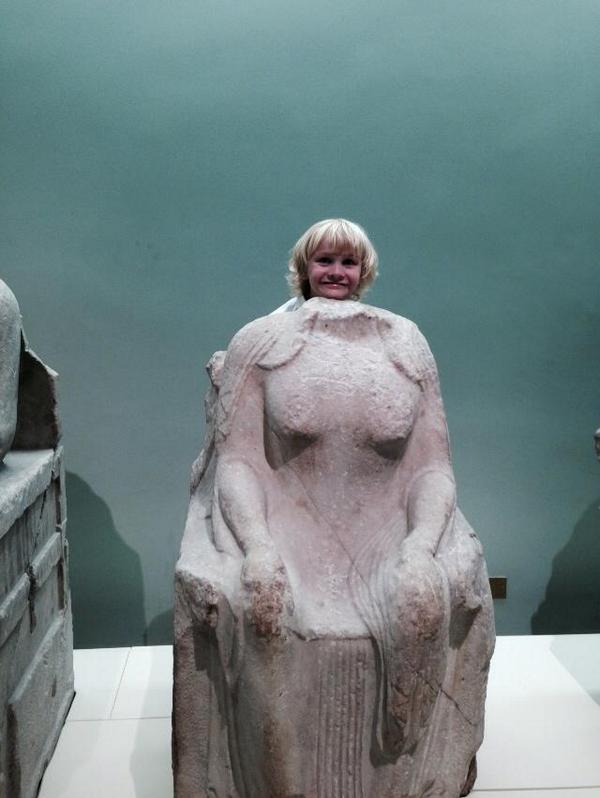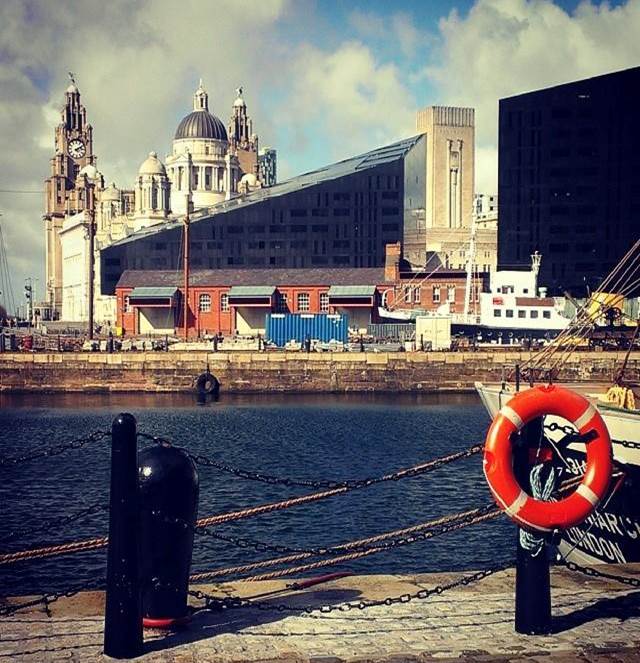Over the summer our undergraduate students took part in a light-hearted photo competition sharing snippets of the exciting things they got up to over the break!
We promised the entrant with the most inspiring/original photo a year’s membership to either the Tate or the V&A – so not a bad prize for tagging your holiday snaps! Photographs were uploaded to Instagram and Twitter and with so many great entries we invited Professor Francis Hodgson to judge them.
Francis lectures in the Culture of Photography here at the University of Brighton and as an internationally recognised critical writer on photography we thought he was well-placed to scrutinize our entries.
Here’s what he had to say:
I find that a number of pictures competed in my mind for prizes, and several could be listed as ‘honourable mentions’. But I am asked to name three.
In third place is a pleasant study where a live person gives animation to a sculptural figure and by extension to the whole business of ‘old rocks’. A little tiny moment of performance is enough to make us see that a visit to the museum was fun and engaging. The near-accuracy of the match of two scales, of person and of sculpture, makes a visual pun, reinforced by the plausible ‘sky’ of the background.
All in all, a quick light way to load a photograph to make it memorable and meaningful. Congratulations to Kane Preston (Museum and Heritage Studies).
In second place, is a simple view of the Albert Dock in Liverpool in which the architectural masses counter each other nicely between old and new, former working buildings against new living spaces. Two strong dark reflective masses make the structure of the picture– water closer to the camera and a pair of dark buildings angled across the upper half of the image. Beyond these a number of well‐known towers and domes cluster as though competing for their new position in the re-shaped city. A few ships convey a suggestion of stilled maritime activity.
A very brightly coloured lifebelt at the right front not only adds a solid anchor to the whole composition but can be read as the metaphorical indicator of the rescue of a once‐derelict area that has successfully taken place through generations of reclamation. Congratulations Alice Hudson (Fashion and Dress History).
In first place, a view in the archive of the Beamish Museum in County Durham. In this view, the mere presence of a modern set of steps is enough to make the picture. The bulk of the view is in a muted near monochrome, entirely appropriate to the holdings of the museum. But the vibrant blue step ladder in the foreground makes all the difference. By that gesture, viewers are reminded that the museum is not merely a frozen repository, but is a working community assembling a number of skilled activities around the shared common purposes of the museum. It is only because our attention has been held by that bright blue slash of the steps that we move further into the picture able to distinguish the elements that are not at all as ‘olde worlde’ as they appear and that we might not have noticed otherwise: archival box files, plastic crates, an electric clock, security grille and soon. The entirely contemporary powder‐coated blue metal structure was enough to lead us into a picture which is in fact quite a neat play on the two functions of the museum, to engage the new in the preservation of the old. Congratulations to Sarah Geissler (Fashion and Dress History), for making a proper little photograph from the simplest of elements in front of her.
If you want to view all the #hoadontour entries just search the hashtag on Twitter and Instagram!



